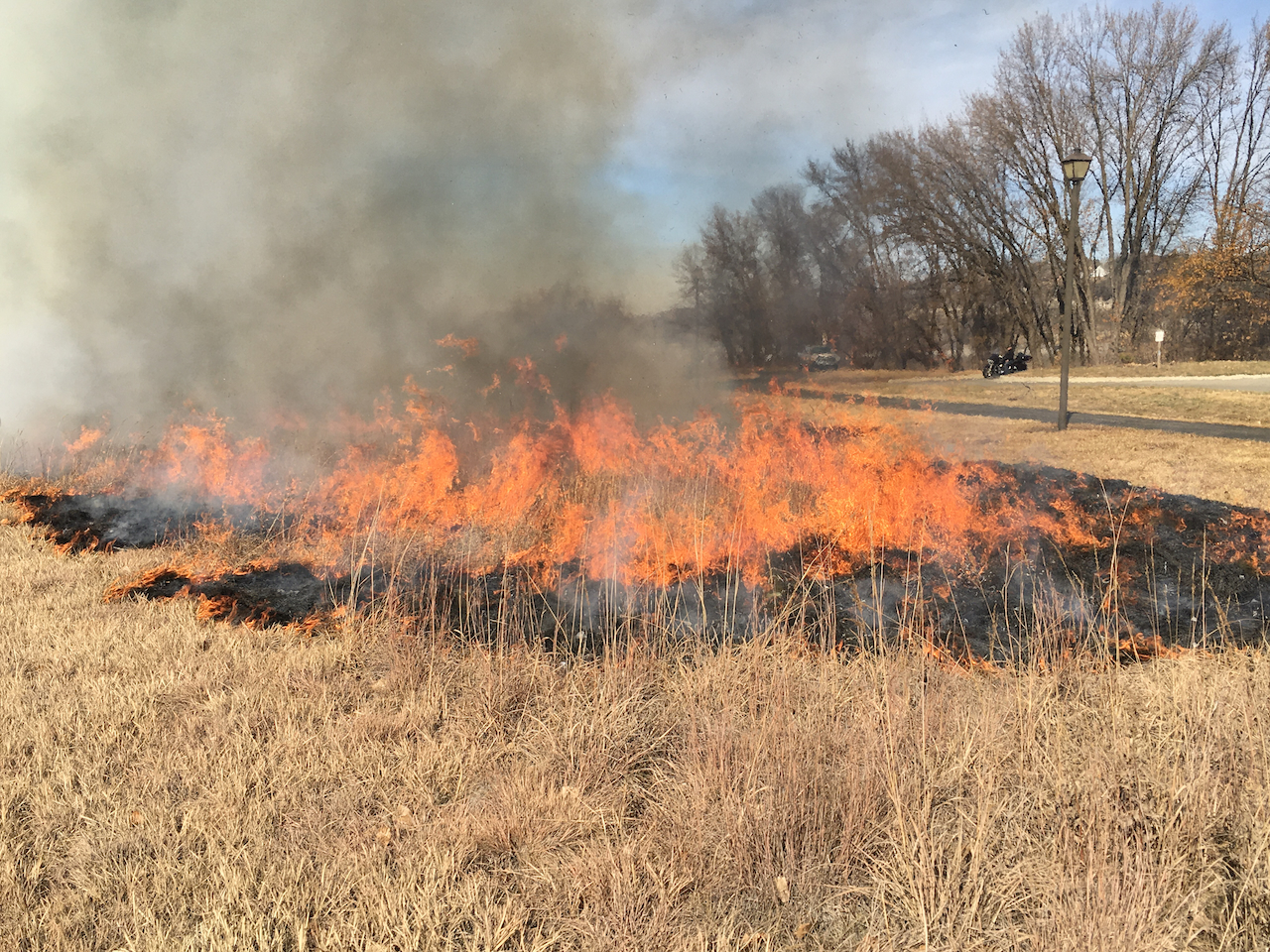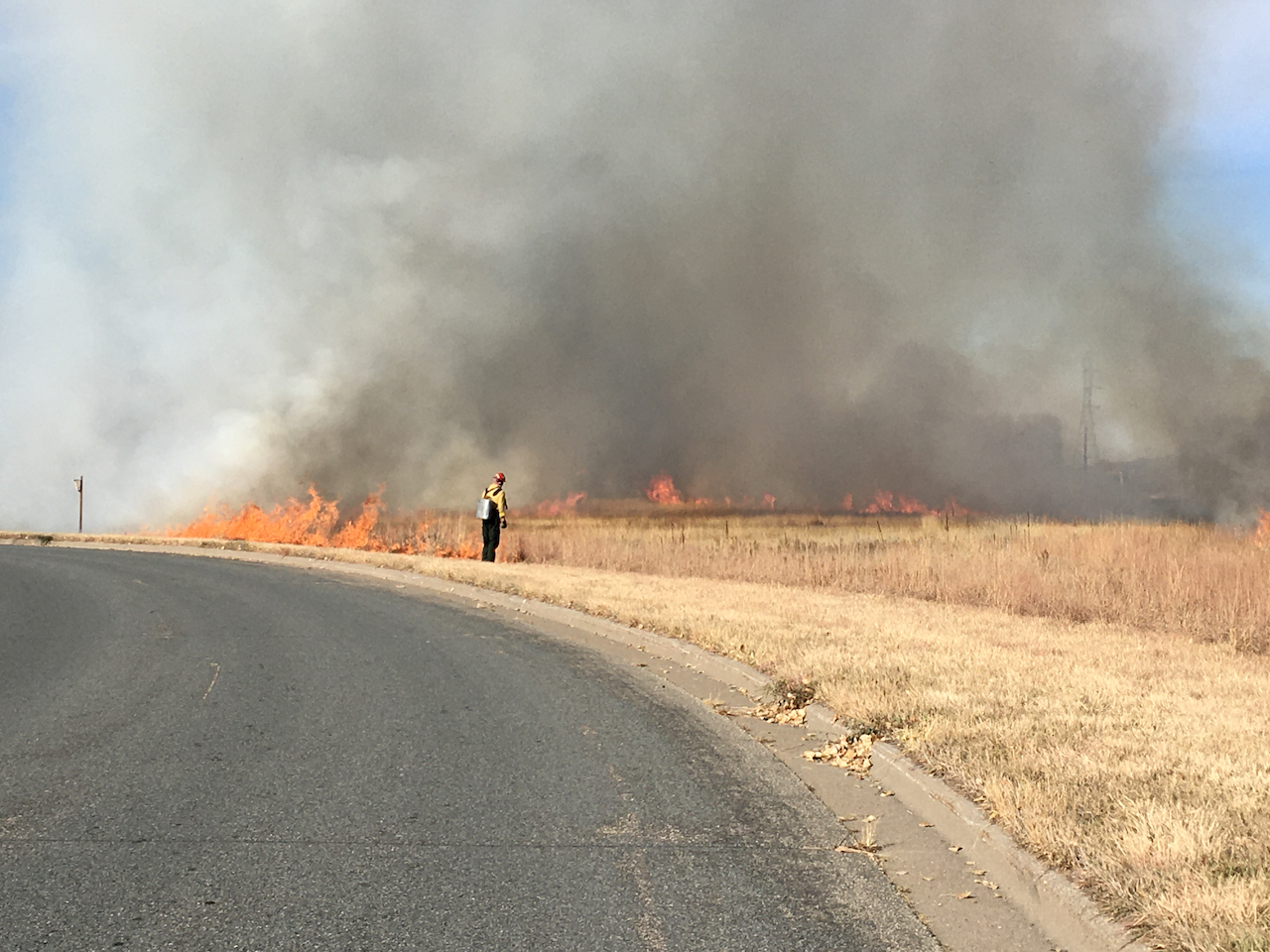Long fall? Extended prescribed burn season!

Because of the warmer-than-average fall, we were able to help renew the prairie at Hastings River Flats through an October prescribed burn.
Sometimes fall is fleeting. Bluebird skies and the golden glow of the oaks and grasses can quickly turn into biting winds and ice-covered branches. This fall, we were gifted with warm, dry days into late October and November, which gave us an opportunity to conduct a prescribed burn at Hastings River Flats, a project we've been working on for over 20 years.
Here's why we jumped at the chance to burn the prairie there this fall.
How fall burns increase prairie diversity
The 216 acres of Hastings River Flats, located along the Mississippi River at Lock and Dam No. 2 in Hastings, comprise many habitats: floodplain forest, emergent marsh and restored wet prairie. With this mix of interacting habitats, trees and shrubs can easily move from the forest into the prairie, and these woody plants eventually shade out the sun-loving grassland plants.
A fall prescribed burn is a useful tool for reducing this woody encroachment. Trees and shrubs spend the spring and summer putting energy into growth and development of buds that will become next spring's leaves and flowers. Burning trees and shrubs in the fall with a hot fire removes this growth, and the tall flames ensure that the fire reaches the larger woody plants. Often, these out-of-place trees and shrubs don't come back the following spring, allowing grasses and wildflowers to fill the gaps left behind.

A member of the burn crew ignites a flanking fire perpendicular to the wind direction that will burn toward the center of the prairie.
More benefits of fall burns
Prescribed fires in the fall have benefits beyond reducing woody encroachment in a prairie. Because of our brief springs and hot summers, warm-season grasses, such as big bluestem, can become very abundant quickly, and cool-season grasses and sedges have a harder time getting a foothold. Fall burning, which consumes the aboveground parts of the warm-season grasses, creates openings for the grasses and sedges that actively grow in the early spring.
Fall burns also benefit prairie wildlife, especially in wet prairies like Hastings River Flats. Late-season fires temporarily increase bare ground, which is important to ground-nesting birds for maneuvering and accessing food. Fall burns also favor wildflower growth the following spring, and the temporary flush of wildflowers early the next growing season provides immediate food sources for foraging bees and other invertebrates. Additionally, insects, reptiles and nesting birds are less likely to be harmed during fall burns as wildlife are often hibernating underground and have not yet built nests.

Patches of unburned prairie serve as refugia and winter cover before plants return next spring.
Mixing it up
Considering all the useful benefits of fall prescribed burns, you might wonder why we'd ever choose to burn in the spring. Of course, there are benefits to this approach, too. A spring burn is a useful tool when we want to favor the growth of warm-season grasses and wildflowers. Reducing cool-season weeds and aggressive grasses limits the competition for space and resources. This gives warm-season grasses and wildflowers a leg up to access water, nutrients and pollinators, which supports their growth and abundance. (Check out our write-up and video about the value of spring burns here.)
How we use fire, as well as tools like mowing, haying and other prairie management techniques, is informed by what we think the site needs; we consistently need to be responsive and adaptive when conditions change. We hope that this fall's burn will reinvigorate the Hastings River Flats prairie, and that it will be even more of a haven for insects and other wildlife come spring.